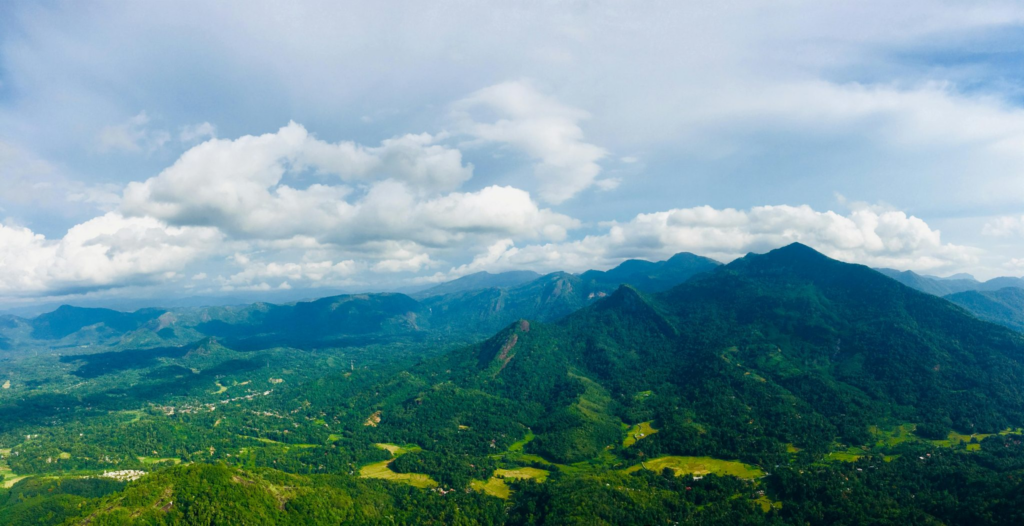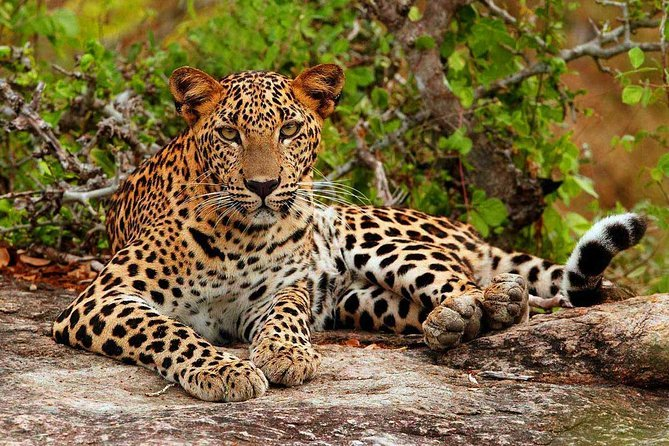Sri Lanka, a tropical paradise located just south of India, is renowned for its breathtaking landscapes and rich biodiversity. The island’s unique geographic location and varied climatic conditions contribute to its incredible range of flora and fauna. This article explores the factors that make Sri Lanka’s nature exceptional, from its lush rainforests to its stunning beaches. Understanding the unique aspects of Sri Lanka’s nature is not only fascinating but also crucial for conservation efforts and sustainable tourism.
The Geographic Diversity of Sri Lanka
Sri Lanka’s unique geographic features play a significant role in its natural diversity. The island is characterized by a variety of landscapes, including mountains, plains, and coastal areas. The central highlands, home to the island’s tallest peaks, experience a cooler climate and heavy rainfall, creating a distinct ecosystem with rich montane forests. In contrast, the lowland areas boast tropical rainforests, dry zones, and coastal regions, each supporting different species and ecosystems.
The geographic isolation of Sri Lanka has also contributed to its high levels of endemism. Many species found here, such as the Sri Lankan leopard and the purple-faced langur, are not found anywhere else in the world. This isolation has allowed unique evolutionary pathways to develop, making Sri Lanka a biodiversity hotspot that attracts researchers and nature enthusiasts alike.
Flora and Fauna of Sri Lanka
The flora of Sri Lanka is as diverse as its geography, with over 3,000 species of flowering plants recorded. The island is home to an impressive variety of trees, including the iconic banyan tree and the towering teak. Many of these species are endemic, showcasing the island’s unique evolutionary history. The Sinharaja Forest Reserve, a UNESCO World Heritage site, is one of the best places to witness this botanical diversity.

The fauna of Sri Lanka is equally remarkable. With over 500 species of vertebrates, the island boasts a wide range of wildlife, from elephants and leopards to a plethora of bird species. The migratory patterns of many birds, such as the lesser adjutant stork, intersect with Sri Lanka’s ecosystems, making it an essential stopover point for migratory birds. The island’s marine life is also abundant, with coral reefs teeming with vibrant fish and other aquatic species.

Ecosystems and Conservation Efforts
Sri Lanka’s ecosystems are vital for maintaining the balance of nature. The island comprises several distinct ecosystems, including rainforests, dry forests, wetlands, and coastal ecosystems. Each of these areas plays a crucial role in biodiversity preservation. For example, the wetlands in the northern region support various migratory birds, while the coastal ecosystems provide habitat for marine life.
Unfortunately, these ecosystems face threats from deforestation, urbanization, and climate change. Conservation efforts are underway to protect these vital areas. Organizations and government bodies are working hand-in-hand to establish protected areas and national parks, such as Yala National Park and Udawalawe National Park, to safeguard the island’s unique wildlife and natural resources. These initiatives aim not only to conserve biodiversity but also to promote eco-tourism, which can provide sustainable economic benefits to local communities.
Climate and Biodiversity Interactions
The climate of Sri Lanka is another critical factor influencing its biodiversity. The island experiences two monsoon seasons, which contribute to the rich variety of ecosystems present. The southwest monsoon brings rain to the western and southern regions, fostering lush vegetation, while the northeast monsoon affects the northern and eastern parts, supporting different ecosystems suited to the drier climate.
These climatic variations create microhabitats that allow various species to thrive. For instance, the wet zone is home to many endemic species, while the dry zone supports a different set of flora and fauna. The interplay between climate and biodiversity highlights the importance of understanding environmental patterns to manage and conserve ecosystems effectively.
The Role of Sustainable Tourism
Sustainable tourism plays a pivotal role in preserving Sri Lanka’s natural treasures. With its stunning landscapes and rich wildlife, the island attracts millions of tourists each year. However, unchecked tourism can lead to environmental degradation. To mitigate these impacts, many tour operators and stakeholders are adopting sustainable practices that prioritize conservation.
Eco-friendly resorts and guided nature tours are becoming increasingly popular, allowing visitors to appreciate Sri Lanka’s nature while minimizing their ecological footprint. Educational programs and community involvement in tourism initiatives help raise awareness about conservation issues and promote responsible travel. By supporting sustainable tourism, travelers can contribute to the protection of Sri Lanka’s unique ecosystems and wildlife.
Sri Lanka’s nature is a remarkable tapestry of diverse ecosystems, endemic species, and stunning landscapes. The island’s geographic isolation, varied climate, and rich biodiversity make it a unique destination for nature lovers and researchers alike. As we continue to explore and appreciate this natural wonder, it is crucial to support conservation efforts and sustainable tourism practices. Protecting Sri Lanka’s nature ensures that future generations can enjoy the beauty and diversity that this island paradise has to offer.
FAQ
1. What are the best places to experience Sri Lanka’s nature?
Some of the best places to experience Sri Lanka’s nature include Yala National Park, Sinharaja Forest Reserve, and the Knuckles Mountain Range. Each location offers unique scenery and opportunities to observe diverse wildlife.
2. Is Sri Lanka a biodiversity hotspot?
Yes, Sri Lanka is recognized as a biodiversity hotspot due to its high levels of endemism and diverse ecosystems that encompass a wide range of flora and fauna.
3. What conservation efforts are in place in Sri Lanka?
Conservation efforts in Sri Lanka include the establishment of national parks, wildlife sanctuaries, and community-based initiatives aimed at protecting endangered species and their habitats.
4. How does climate affect Sri Lanka’s biodiversity?
Sri Lanka’s varied climate, influenced by monsoon seasons, creates diverse ecosystems that support different species. The wet and dry zones allow for unique flora and fauna to thrive, promoting a rich biodiversity.
5. What role does tourism play in Sri Lanka’s conservation efforts?
Tourism plays a crucial role by generating revenue for conservation initiatives and promoting awareness about environmental issues. Sustainable tourism practices help minimize the ecological footprint while supporting local communities.


